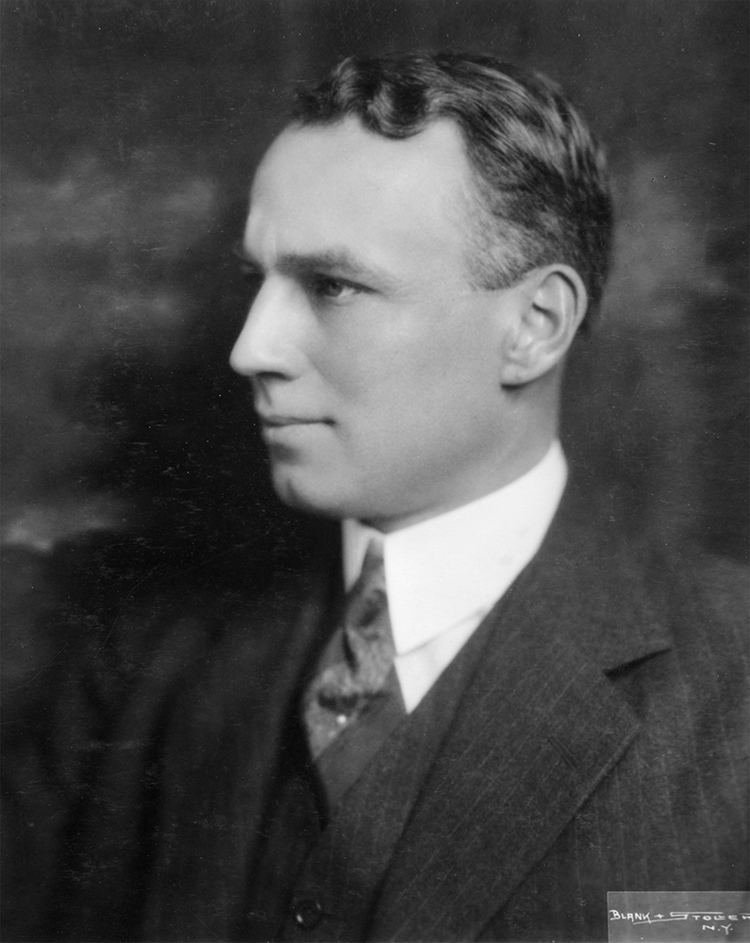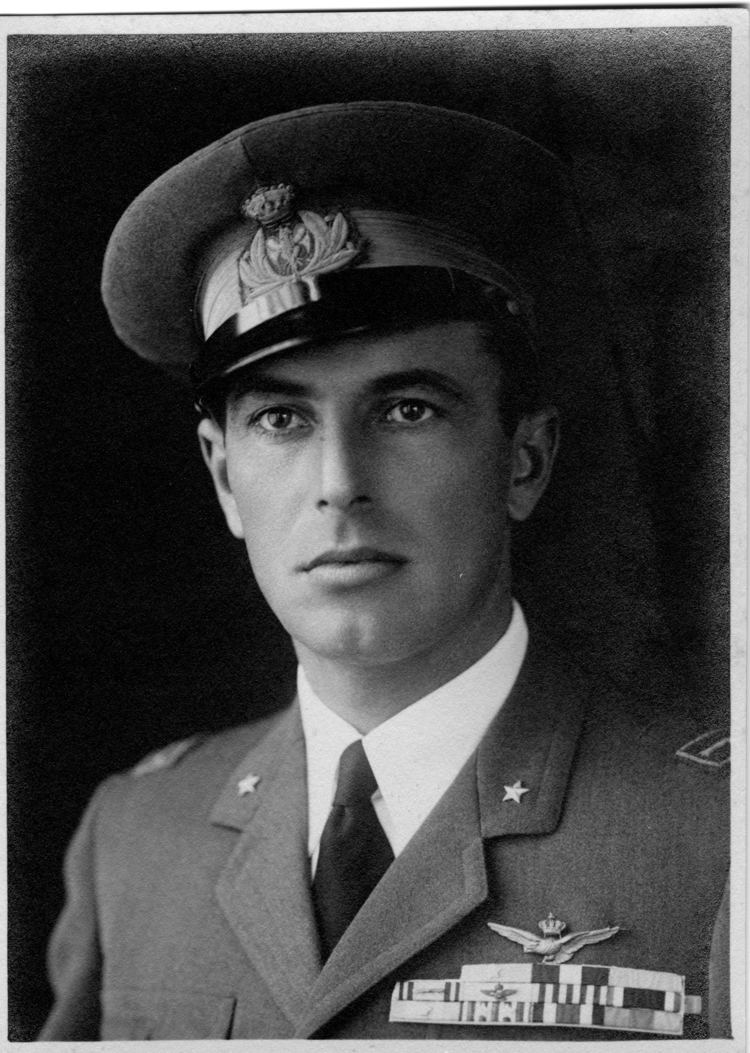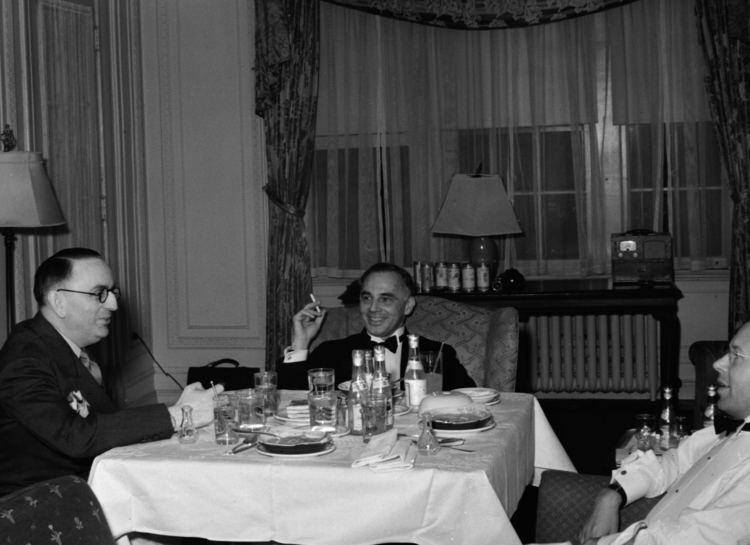Name Alfred Loomis | Role Attorney | |
 | ||
Education Harvard University, Yale University, Harvard Law School | ||
Chapter 1 | The Secret of Tuxedo Park
Alfred Lee Loomis (November 4, 1887 – August 11, 1975) was an American attorney, investment banker, philanthropist, scientist/physicist, inventor of the LORAN Long Range Navigation System, and a lifelong patron of scientific research. He established the Loomis Laboratory in Tuxedo Park, New York, and his role in the development of radar and the atomic bomb is considered vital to the Allied victory in World War II. He invented the Aberdeen Chronograph for measuring muzzle velocities, contributed significantly (perhaps critically, according to Luis Alvarez) to the development of a ground-controlled approach technology for aircraft, and participated in preliminary meetings of the Manhattan Project. Loomis also made contributions to biological instrumentation. Working with Edmund Newton Harvey he co-invented the microscope centrifuge, and pioneered techniques for electroencephalography. In 1937, he discovered the sleep K-complex brainwave.
Contents
- Chapter 1 The Secret of Tuxedo Park
- Early years
- Military service and a new career in finance
- Loomis Laboratory at Tuxedo Park
- Loomis in World War II
- Legacy and later years
- Patents
- Projectiles
- Sound Waves and Ultrasound
- Animal Studies
- Miscellaneous
- Time Measurement
- Brain and Sleep Studies
- References

Early years

Born in Manhattan, Loomis was the son of Julia Josephine Stimson and Henry Patterson Loomis, and grandson of Alfred Lebbeus Loomis. There were prominent members of society on both sides of his family; primarily they were physicians. Alfred's parents separated when he was very young, and his father died when Alfred was in college. His first cousin was Henry Stimson, who held cabinet-level positions in the administrations of William Howard Taft, Herbert Hoover, Franklin Roosevelt, and Harry S. Truman. From the boy's early years, Stimson exerted considerable influence on Loomis.

Loomis attended Phillips Academy and studied mathematics and science at Yale University. He graduated cum laude from Harvard Law School in 1912. Immediately following his graduation, Loomis married and began practicing corporate law in the firm of Winthrop and Stimson, where he was very successful.
His first wife was Elizabeth Ellen Farnsworth of Dedham, Massachusetts, from a prominent Boston society family, whom he wed on June 22, 1912. They had three sons: Alfred Lee Jr., William Farnsworth, and Henry.
In 1908 he became a hereditary member of the Rhode Island Society of the Cincinnati.
In 1917, Alfred Loomis and Landon K. Thorne, the wealthy husband of Loomis's sister Julia, purchased 17,000 acres (69 km2) of Hilton Head Island, which they established as a private preserve for riding, boating, fishing, and hunting. The centerpiece of the property was the old Honey Horn Plantation. Loomis's hobbies included automobiles and yachting, including the racing of America's Cup yachts against the Vanderbilts and Astors.
Military service and a new career in finance
After the United States entered World War I in 1917, Loomis volunteered for military service. He was commissioned as a captain, and rose to the rank of lieutenant colonel. He worked in ballistics at the Aberdeen Proving Ground in Maryland, where he invented the Aberdeen Chronograph, the first instrument to measure accurately the muzzle velocity of artillery shells, and portable enough to be used on the battlefield. At Aberdeen he met and worked with a Johns Hopkins physicist, Robert W. Wood, under whose influence Loomis's long-standing interest in inventing and gadgetry evolved into the serious pursuit of experimental and practical physics.
In the 1920s, Loomis collaborated with his brother-in-law, Landon K. Thorne, rather than returning to the practice of law. They acquired Bonbright and Company and brought it from the verge of bankruptcy to becoming a preeminent U. S. investment banking-house specializing in public utilities. They became very wealthy by financing electric companies as these began to establish the electrical infrastructure of rural America, and Loomis sat on the boards of several banks and electric utilities. Loomis and Thorne pioneered the concept of the holding company, consolidating many of the electric companies that operated on the East Coast of the United States. Loomis further increased his fortune via insider trading practices that now are illegal.
In 1928, anticipating the coming Wall Street Crash of 1929, he, his partner, and his firm had converted their investments into cash—having determined that the market had risen so dramatically that it was unsustainable and a crash was inevitable. Once the stock market crash had bankrupted the majority of speculators, while Wall Street floundered, he and his firm became even wealthier as a result of purchasing stocks cheaply after they had plummeted in value and few people had the cash to reinvest. While Senatorial hearings sought to tar him for the success of his prudent strategy, no substantive charges were ever brought, and he actually worked closely with FDR and his administration in preparing the country's technological base for war, using his many contacts in New York finance, as well as generous sums from his own considerable fortune, to finance the early developments in radar, before government money could be provided.
Loomis Laboratory at Tuxedo Park
Taking advantage of his considerable wealth, Loomis increasingly indulged his interest in science. He established a personal laboratory near his mansion within the exclusive enclave of Tuxedo Park, New York. He and his small staff conducted pioneering studies in spectrometry, high-frequency sound and capillary waves, electro-encephalography, and the precise measurement of time, chronometry.
Eventually Loomis was elected to the National Academy of Sciences for his work in physics.
His laboratory was the best of its kind, containing equipment that few universities could afford. His reputation spread quickly, particularly in Europe, where money for science was scarce. Loomis often sent first-class tickets to famous European scientists so that they could travel to the United States to meet with their peers and collaborate on projects. They would be picked up at the airport or train station and brought to Tuxedo Park in his limousine. At first, some in the scientific community called him an "eccentric dabbler," but soon his laboratory became the meeting place for some of the most accomplished scientists of the time, such as Albert Einstein, Werner Heisenberg, Niels Bohr, James Franck, and Enrico Fermi. Scientists who worked personally with him were convinced of his capability and industry. His wealth, connections, and charm all made him highly persuasive.
His Tuxedo Park laboratory was nicknamed the "Tower House" and "The Palace of Science". He turned this Tuxedo Park laboratory into a meeting place for the most visionary minds of the twentieth century; Albert Einstein, and the aforementioned scientists. Today this location is the home of The Tube Museum New York.
He was awarded the Franklin Institute's John Price Wetherill Medal in 1934 along with E. Newton Harvey.
In 1939, Loomis began a collaboration with Ernest Lawrence and was instrumental in financing Lawrence's project to construct a 184-inch (4.7 m) cyclotron. By this time, Loomis had become a prominent figure in experimental physics and had moved his Tuxedo Park operations to Cambridge, Massachusetts, where he established a joint operation with the Massachusetts Institute of Technology (MIT).
Additionally, Loomis' 1937 house in Tuxedo Park by architect William Lescaze is regarded as an early experiment in double-skin facade construction. This house included "an elaborate double envelope" with a 2-foot-deep air space conditioned by a separate system from the house itself. The object was to maintain high humidity levels inside.
Loomis in World War II
In the late 1930s, Loomis's scientific team turned their attention to radio detection studies, building a crude microwave radar which they deployed in the back of a van. They drove it to a golf course and aimed it at the neighboring highway in order to track automobiles, then took it to the local airport, where they tracked small aircraft.
Loomis had visited the United Kingdom and knew many of the British scientists who were working on radar. Britain, at war with Germany, was being bombed nightly by the German Luftwaffe, while America was trying to stay out of the war. British scientists had developed the cavity magnetron, which allowed their radar to be made small enough for installation in aircraft. In 1940, the British Tizard Mission visited the United States, seeking help to mass-manufacture the technology they had invented.
On hearing that the British magnetron had a thousand times the output of the best American transmitter, Loomis invited its developers to Tuxedo Park. Because he had performed more work in this area than anyone else in the country, Loomis was appointed by Vannevar Bush to the National Defense Research Committee as chairman of the Microwave Committee and vice-chairman of Division D (Detection, Controls, Instruments). Within a month, he had selected a building on the MIT campus in which to equip a laboratory, dubbing it the MIT Radiation Laboratory, usually referred to as the Radiation Laboratory and later known simply as the Rad Lab. He pressed for the development of radar in spite of the Army's initial skepticism, and arranged funding for the Rad Lab until federal money was allocated.
The MIT Rad Lab was managed by its director, Lee DuBridge. Meanwhile, Loomis assumed his customary function of eliminating the obstacles to research and providing the encouragement that was needed at a time when success still remained elusive. The resulting 10-cm radar was a key technology that enabled the sinking of U-boats, spotted incoming German bombers for the British, and provided cover for the D-Day landing. Loomis took advantage of all his business acumen and industry contacts to ensure that no time was wasted in its development. DuBridge later commented, "Radar won the war; the atom bomb ended it."
Originally known as "LRN" for Loomis Radio Navigation, LORAN was invented by Loomis. It was the most widely used long-range navigation system until the advent of GPS (which was developed from it and became available to the public only in 2000), and LORAN is being enhanced and retained as a land-based alternative to the satellite-based system. The system was developed at the laboratory and is based on a pulsed hyperbolic system using a master and two slave stations. A world network of stations once existed. The current LORAN system has been phased out in the United States and Canada. The United States Coast Guard (USCG) and Canadian Coast Guard (CCG) ceased transmitting LORAN-C (and joint CHAYKA) signals in 2010.
Loomis also made a significant contribution to the development of ground-controlled approach technology, a precursor of today's instrument-landing systems that use radar to enable ground controllers to "talk down" aircraft pilots and help them to land safely when poor visibility makes visual landings difficult or impossible. Even untrained persons forced into the unexpected position of having to pilot an aircraft in an emergency, have been guided to land safely using this technology.
Legacy and later years
President Roosevelt lauded the value of Loomis's work, describing him as being the civilian who was second perhaps only to Churchill, in facilitating the Allied victory in World War II.
Loomis was elected to the National Academy of Sciences in 1940, and received several honorary degrees: from Wesleyan University he received a D.Sc. in 1932, from Yale University an M.Sc. in 1933, and from the University of California an LL.D. in 1941.
Loomis was married to Ellen Farnsworth for over thirty years; she was beautiful, delicate, and often suffered from debilitating depression, eventually developing dementia. They had three children, Alfred, Jr., a pioneering investor, two-time winner of the Bermuda Race and head of the winning America's Cup syndicate in 1977; Henry, head of the Corporation for Public Broadcasting and Farnsworth, a physician and professor at Brandeis (Farnsworth's grandson is Reed Hastings, co-founder of Netflix). He had an affair with a colleague's wife, Manette Hobart, and in 1945 he divorced Ellen and immediately married Manette, scandalizing New York society. At this point he completely changed his lifestyle, eschewing his multiple residences and numerous servants, and settling into a single household in which he and his wife shared a relationship that was characterized by its domesticity. They remained married until Alfred Loomis died more than thirty years later.
Loomis, always a very private person who avoided publicity, retreated from public life entirely after closing the Rad Lab and finishing his related obligations in 1947. He retired to East Hampton, with Manette, and never granted another interview.
